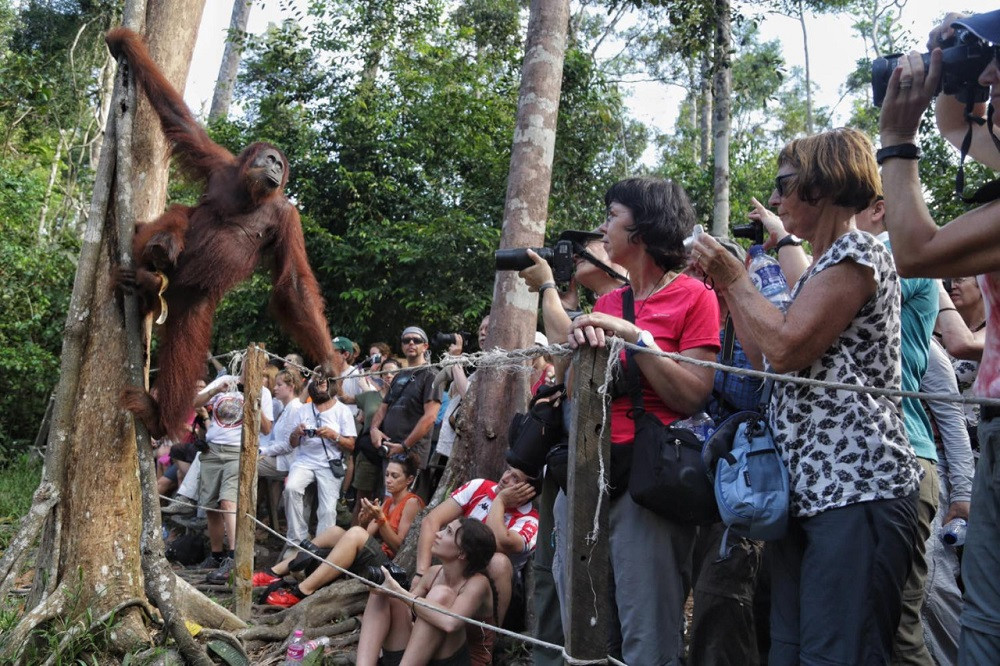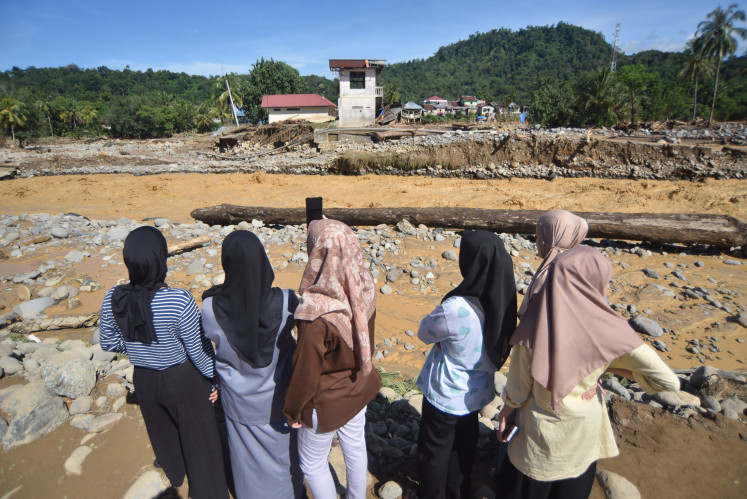Popular Reads
Top Results
Can't find what you're looking for?
View all search resultsPopular Reads
Top Results
Can't find what you're looking for?
View all search resultsForestry Ministry responds
Field monitoring found a rise in the population of orangutans in 24 monitoring sites in Sumatra and Kalimantan from 1,441 in 2014 to 2,431 orangutans in 2022.
Change text size
Gift Premium Articles
to Anyone
R
eferring to the article by Erik Meijaard and Julie Sherman “Orangutan conservation needs agreement on data and trends” published in The Jakarta Post on Sept. 15, we wish to set the record straight as follows:
First, the statement of the Environment and forestry minister on the occasion of the World Orangutan Day which was published on foresthints.news on Aug. 19, was intended to build optimism toward the conservation of long-term species in Indonesia, including the orangutan. The statement by no means talked about the declining number or extinction of orangutans. It made no reference to data of the orangutan population nationally or globally.
Second, the optimism was based on intensive monitoring conducted in predetermined sites. The field monitoring within the scope of the Directorate General of Natural Resource and Ecosystem Conservation found a rise in the population of orangutans in 24 monitoring sites in Sumatra and Kalimantan from 1,441 in 2014 to 2,431 orangutans in 2022. The data thus confirmed a significant population growth of orangutans.
Third, the population growth was based on evidence found in the field. It indicated that the population of orangutans in their habitat is able to increase, so we are optimistic our efforts to conserve the species can work with support from various stakeholders.
Fourth, we appreciate the concern of the authors over the conservation of orangutans. However, we deem their analysis was based on the results of modeling and interpolation of outdated information data. There are factors that need to be considered in the modeling of orangutan conservation in the future, such as births in each habitat pocket, orangutan releases to the wild, the expansion of habitat as a positive impact of termination of new concessions in primary forests and peatlands through Presidential Instruction No. 5/2019 and other policies that support the protection of orangutans and their population growth.
The Environment and Forestry Ministry is committed to the continuation of orangutan conservation in a systematic and massive way through, among other measures, primary forest and peatland conservation, improving the management of habitat pockets of Sumatran orangutan (pongo abelii), Tapanuli orangutans (pongo tapanuliensis) and Kalimantan orangutan (pongo pygmaeus), relocation of orangutans in conflict areas, issuing technical guideline on settlement of human-orangutan conflicts in and around palm oil plantations and greenhouse gas emissions reduction programs in forestry sector.
We hope our clarification will keep Indonesian and international audiences from misleading and inaccurate information on Indonesia’s efforts to conserve orangutans.
***
Nunu Anugrah is a spokesperson for the Environment and Forestry Ministry.











